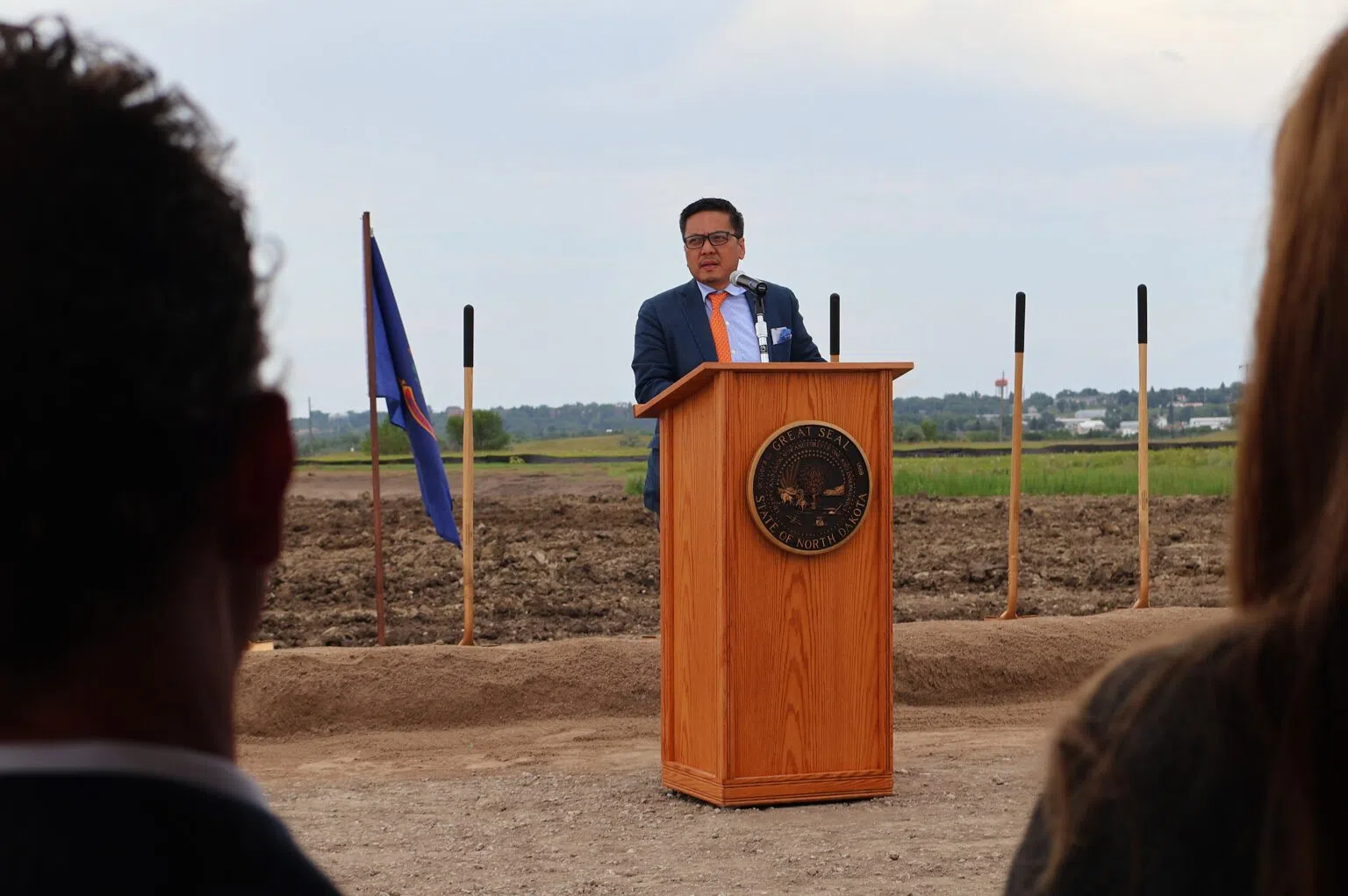By: Michael Achterling
JAMESTOWN, N.D. (North Dakota Monitor) – As shovels dug in for the first time Monday at the site of the new State Hospital in Jamestown, state health officials said they believe North Dakota is turning the page on addressing mental health challenges in the state.
The new State Hospital will be on 12th Avenue, directly across from the current hospital, and house about 140 beds, an increase of 19 beds from the old facility. The new hospital will be smaller, about 316,000 square feet, than the current 650,000-square-foot hospital complex.
Gov. Kelly Armstrong said the new hospital reflects the state’s focus on modernizing important public services, like mental health and addiction services.
“I will be the happiest governor in the world if those 19 beds are eventually sitting empty,” Armstrong said to the standing room only crowd at the groundbreaking ceremony. “Because that will mean we’ve successfully served people upstream, well before their cases become so acute that they require an institutional setting.”
He said the new facility will be “safe and secure” not only for the patients, but the staff that serves them.
The state has budgeted $300 million for construction of the new facility, which was downsized from $330 million that was initially proposed by House lawmakers during the legislative session.
Dr. Eduardo Yabut, medical director for the State Hospital, said behavioral health care has changed and improved over the decades, but the facilities at the old hospital complex remain in the past.
“We’re talking about the seriously and persistently mentally ill. Those that do not do well in a private setting,” Yabut said. “If it takes three to four months, if they stay at the State Hospital for that amount of time, they never end up coming back. They do well in the community.”
The new hospital will provide the similar treatment services as the old facility, such as: short-term inpatient psychiatric treatment, substance abuse services, forensic services and secure inpatient evaluation and treatment services for individuals deemed sexually dangerous.
Other amenities that will be part of the new state hospital are: an arts room, a bank, barber, a botanical garden, chapel, fitness areas, group therapy space, a library and teaching and vocational spaces.
Yabut said the hospital focuses on rehabilitation, which is why there are amenities like a bank and library because patients need to learn how to use those services to become positive community members.
“When they get out into the community they know how to go to a clinic, know how to show up for their appointments, know how to manage their finances … that can never be replicated in an acute care hospital,” he said.
Pam Sagness, director of the behavioral health division for the Department of Health and Human Services, said Armstrong and the Legislature have invested in the new facility because they view it as important to the well-being of the state.
“It’s recognizing how mental health and looking at addiction … that we’re going to make it a priority in the state of North Dakota,” Sagness said.
She said the new hospital will take advantage of simple things that may have been overlooked in the 1800s that can contribute to better mental health and wellbeing of a patient, like natural light.
“Being able to have natural light in your windows so as you are healing, you don’t have that darkness that you see in the older brick buildings,” she said. Sagness added it will also improve the lives of the hospital staff to only need to be in one building, instead of six buildings that make up the current complex.
“Even just little things like the outside courtyards, we’re able to have a labyrinth where you can walk and do nature trails,” she said. “And we’re looking at therapeutic things like gardening, things that other people get to do at home, that we can do in the community, but we can also do them at the hospital.”
Construction is expected to be completed by the end of 2027, according to the project website, but isn’t expected to be operational until early 2028.
“I think people have been waiting for this,” Sagness said. “This is one of those projects that, session after session, it was always discussed, but never signed, stamped and endorsed, and this time, it’s our day.”














Comments